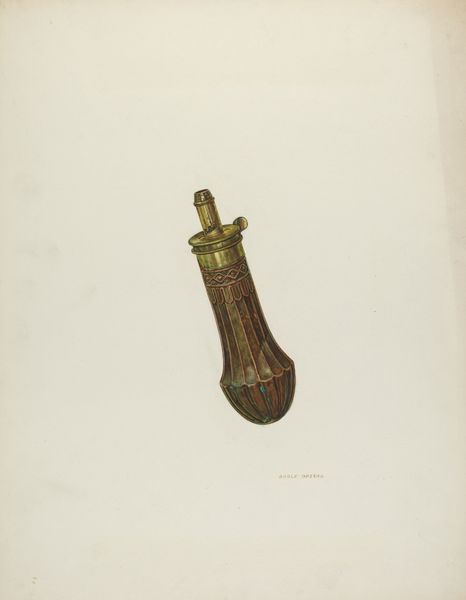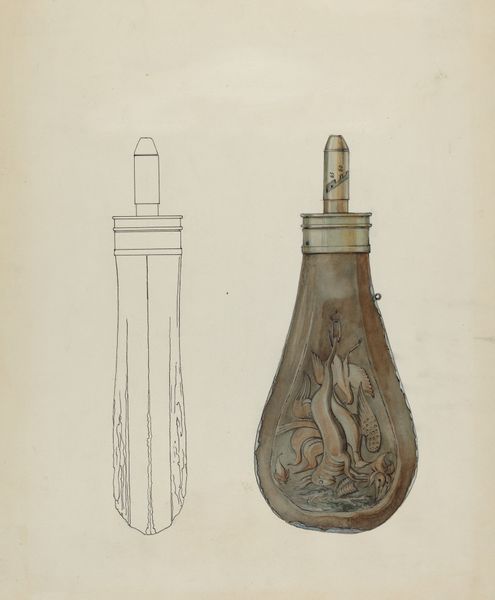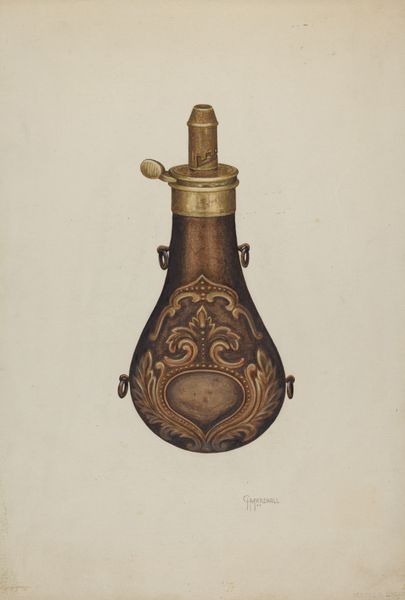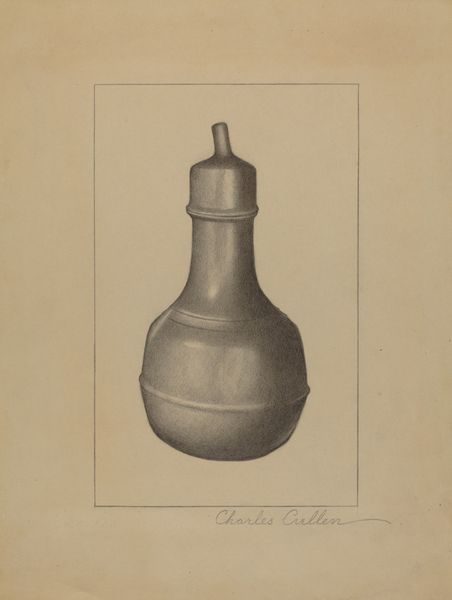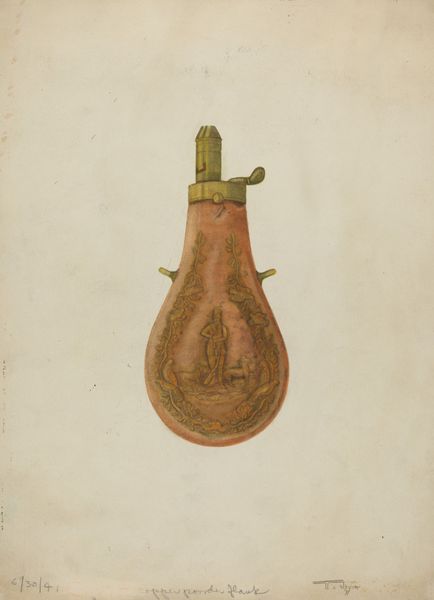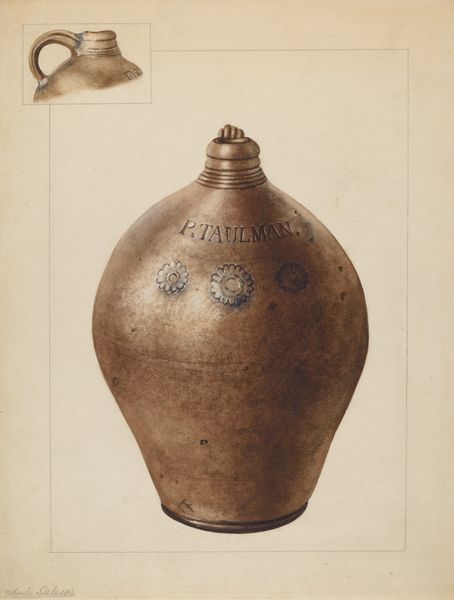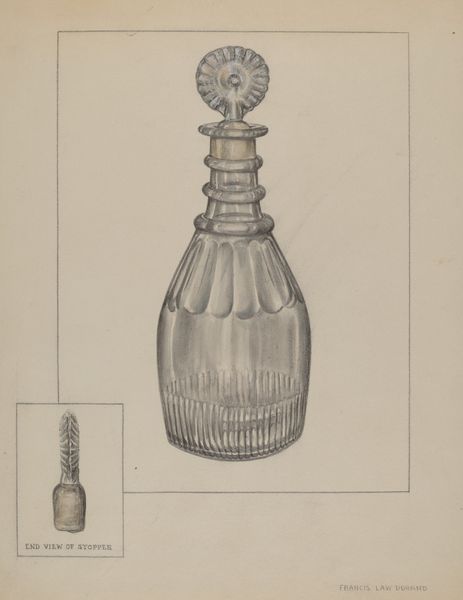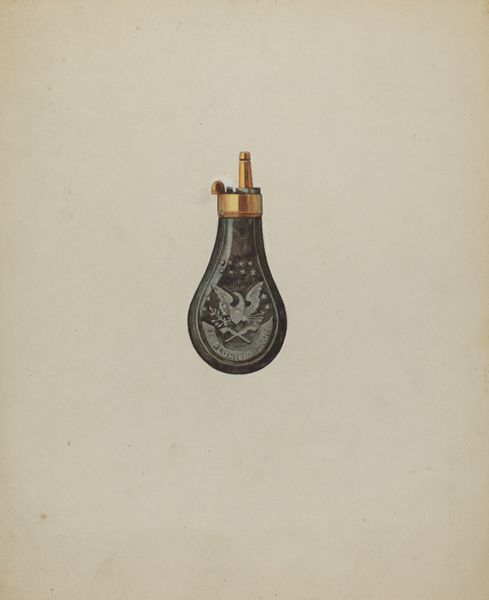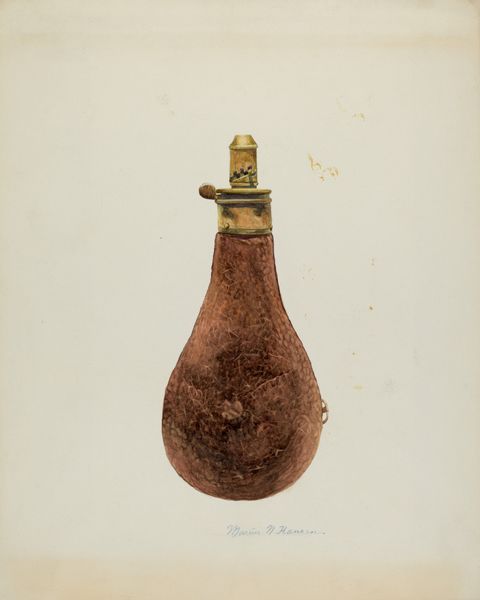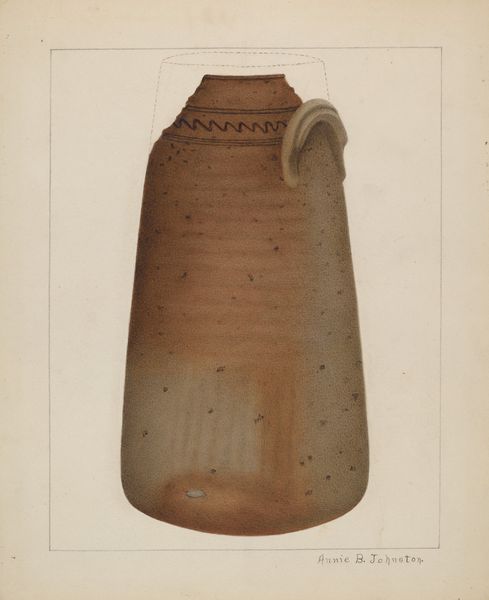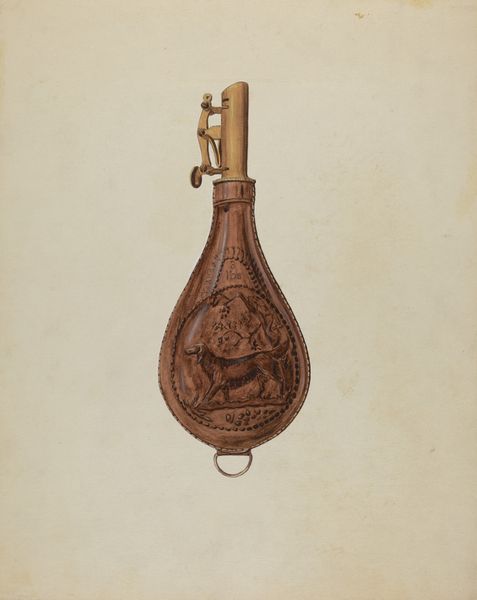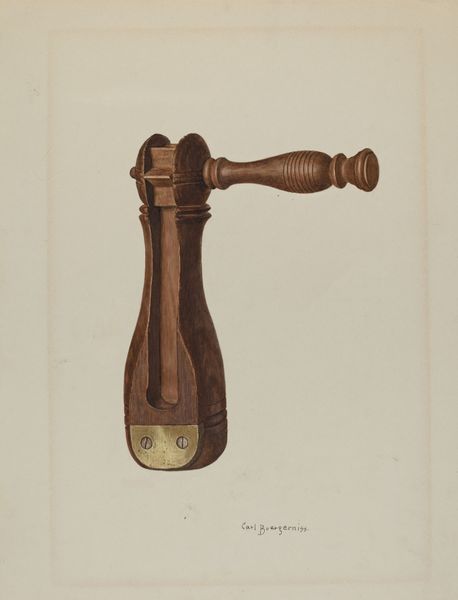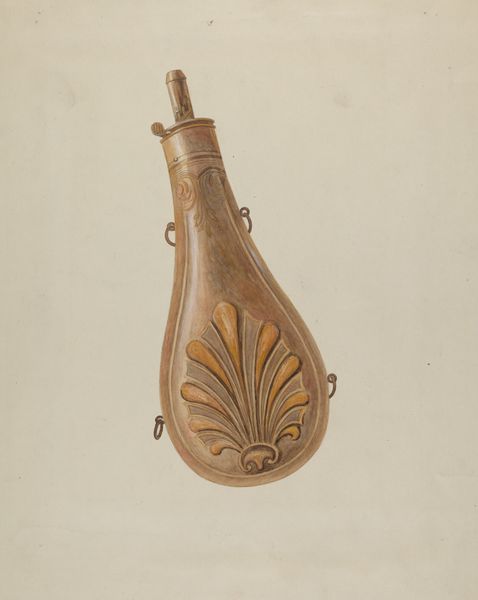
drawing, watercolor
#
drawing
#
watercolor
#
watercolour illustration
#
academic-art
#
watercolor
Dimensions: overall: 28 x 22.5 cm (11 x 8 7/8 in.) Original IAD Object: 6 3/4" long; 2" wide
Copyright: National Gallery of Art: CC0 1.0
Editor: We're looking at Alfred Walbeck's "Powder Horn," a watercolor and drawing made around 1936. It’s rendered in such detail; it feels almost photographic. The subtle shading creates such a tangible texture. How would you interpret the visual elements in this illustration? Curator: Focus on the drawing's structural composition first. The artist meticulously details the object's form through delicate watercolor washes and precise linework. Notice how the top and side views establish a rigorous formal approach, offering different perspectives in scale to demonstrate a complete understanding of its construction. Editor: Yes, the side views are compelling. What's significant to you about how Walbeck used color? Curator: The artist employs a monochromatic palette. By doing so, the subtle variations in tone across the image are amplified, adding volume and realism. Consider the formal implications of a singular colour; How do you see its use affecting the composition and the overall mood? Editor: It really flattens the object. It feels muted, quiet, in a way. And the use of "actual size" markings makes me see it less as art, and more like technical documentation. Curator: Precisely. This work blends fine art with utilitarian documentation. Consider its visual impact: are we not compelled to question if Walbeck is prioritising documentation, form, or the visual aesthetic itself? Editor: This way of observing art transforms the viewing experience. Thank you for the illuminating approach! Curator: My pleasure. This analytical lens hopefully provides an entry point into deciphering an artist’s deliberate formal choices.
Comments
No comments
Be the first to comment and join the conversation on the ultimate creative platform.
